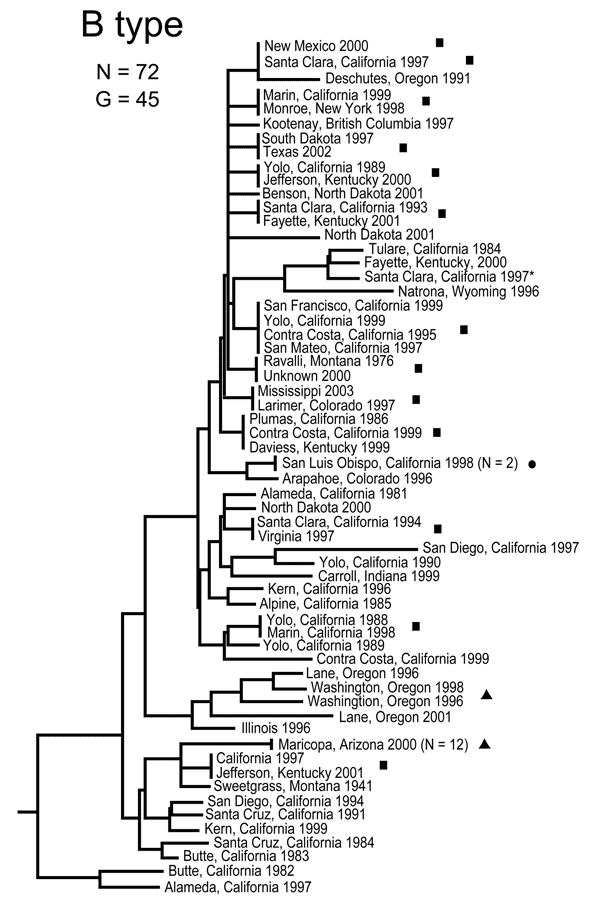Volume 11, Number 12—December 2005
Synopsis
Francisella tularensis in the United States
Figure 3

Figure 3. Genetic relationships among 72 North American Francisella tularensis holarctica B type isolates based upon allelic differences at 24 variable number tandem repeat (VNTR) markers. County, state, and year of isolation are specified to the right of each branch or clade. G indicates number of distinct VNTR marker genotypes, squares indicate genetically identical but epidemiologically unlinked isolates, asterisk indicates isolate with an unknown year of isolation, dot indicates a host-linked isolate, and triangles indicate epidemiologically linked isolates.
Page created: February 02, 2012
Page updated: February 02, 2012
Page reviewed: February 02, 2012
The conclusions, findings, and opinions expressed by authors contributing to this journal do not necessarily reflect the official position of the U.S. Department of Health and Human Services, the Public Health Service, the Centers for Disease Control and Prevention, or the authors' affiliated institutions. Use of trade names is for identification only and does not imply endorsement by any of the groups named above.